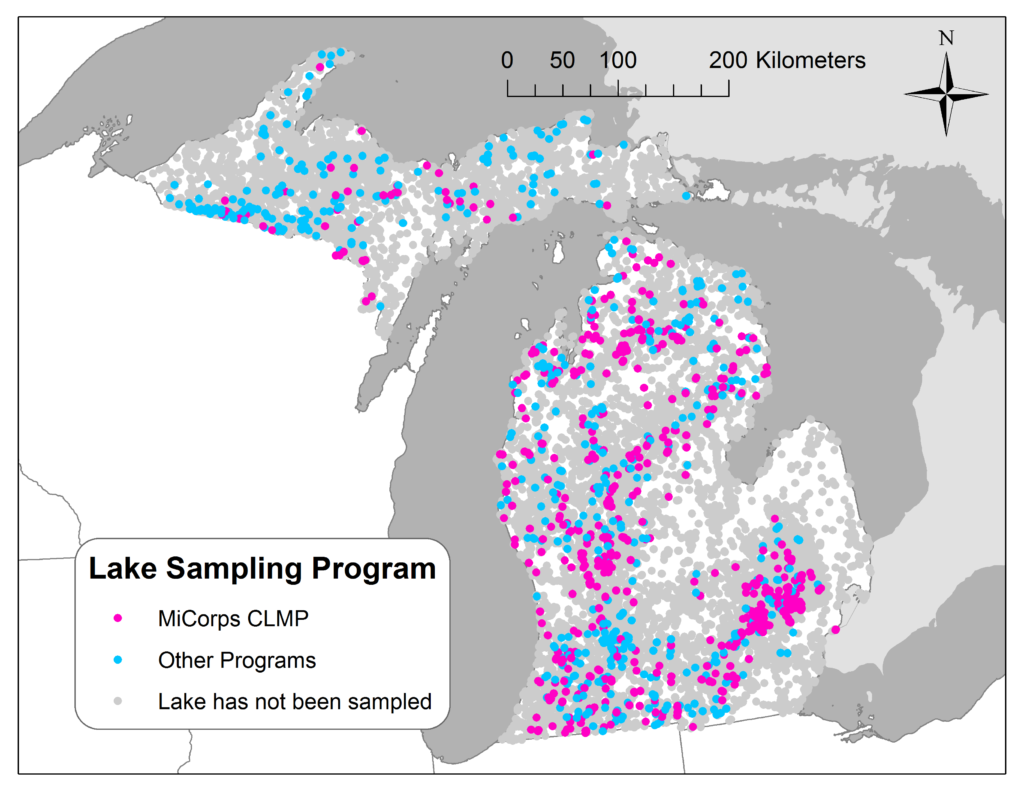If you think volunteer-collected data is not a big part of national lake water quality monitoring, think again! A newly released lake water quality database contains geographic data on over 50,000 US lakes, and water quality data on about 10,000 of those lakes — most of which come from citizen volunteer programs, including the MiCorps Cooperative Lakes Monitoring Program (CLMP). The database is called the LAke multi-scaled GeOSpatial and temporal database or LAGOS, and it contains water quality and map-based geographic data on lakes and reservoirs in 17 states in the Northeast and upper Midwest of the US, including Michigan.
We want to recognize the MiCorps CLMP specifically for contributing over 50% of the lake water quality samples that have been collected for the state of Michigan from around 1980 to 2010. In addition, out of the 1283 lakes that have been sampled in Michigan, MiCorps CLMP volunteers have sampled 669 (52%; see the figure below)! That means LAGOS would only have water quality data on 614 lakes if not for the contributions and hard work of volunteers who have been sampling Michigan’s lakes during that 30-year period.

Overall, the water quality of MiCorps-sampled lakes is doing well. Throughout the 30 years of sampling, Secchi disk readings show Michigan lakes having a stable level of clarity and that lakes with murky and algae-heavy conditions are very rare.
These water quality and geographic data are publicly available through the LAGOS database so data providers can access the data they contributed. The LAGOS database facilitates research and improves our understanding of lake health and lake ecology. We hope that by providing this information we can inform management and policy decisions for lakes in Michigan, as well as lakes throughout the upper Midwest and Northeast U.S.
For more information, visit our website at lagoslakes.org. You can also view the presentation we gave on this project at the 2017 Annual MiCorps Conference.
Posted By: Autumn Poisson and Dr. Patricia Soranno, Department of Fisheries and Wildlife, Michigan State University





